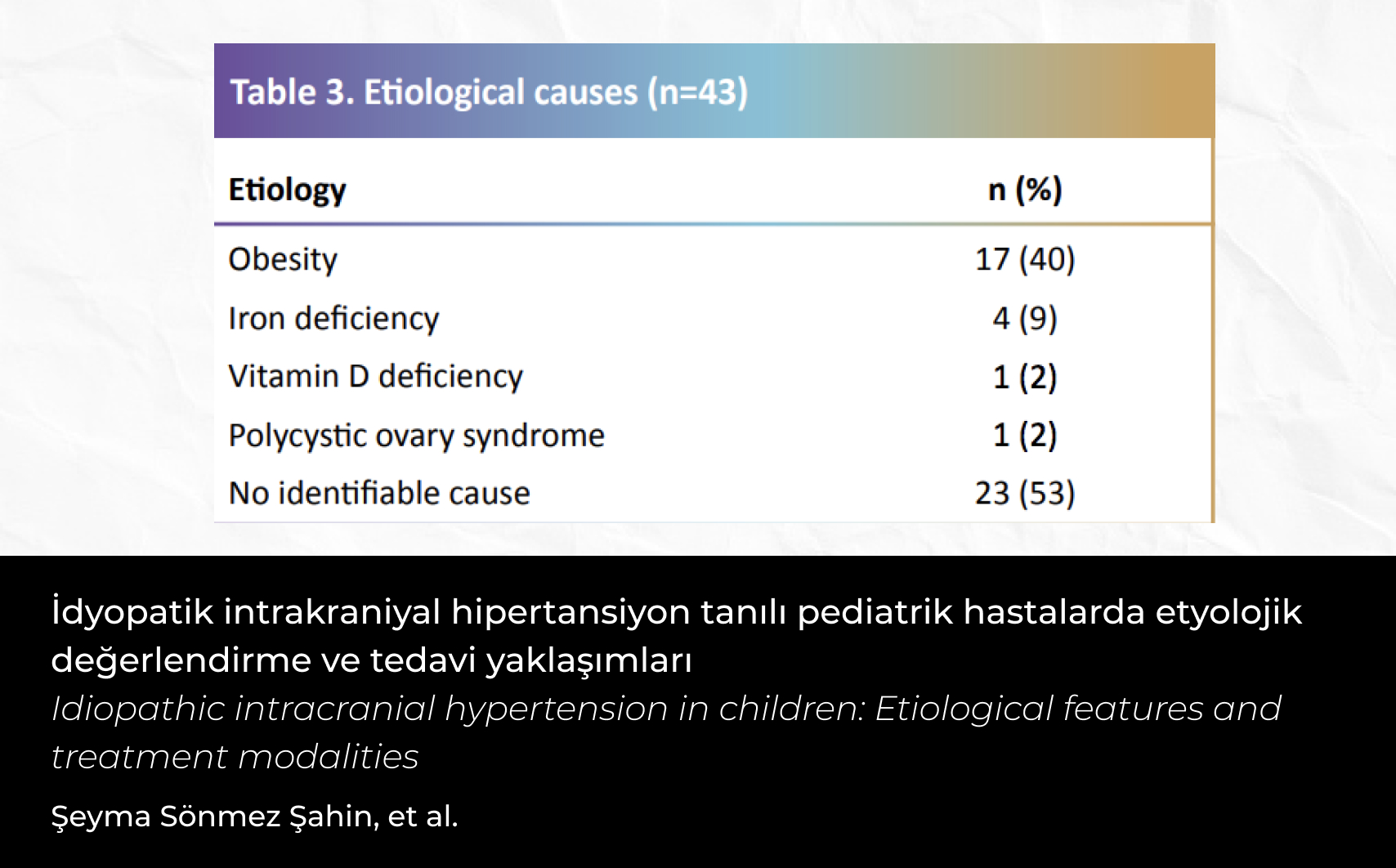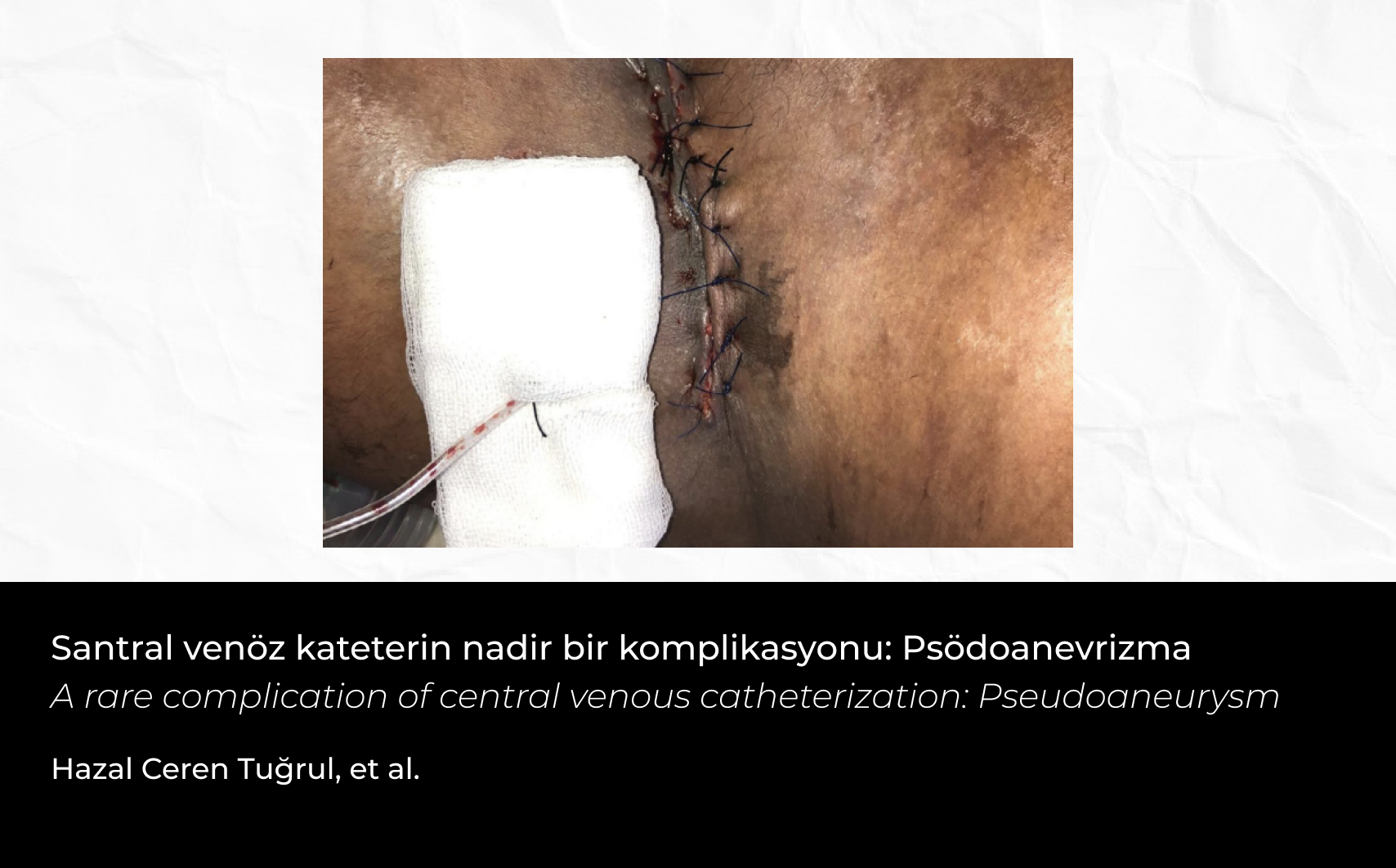2Başakşehir Çam ve Sakura Şehir Hastanesi, Çocuk Metabolizma Hastalıkları Kliniği, İstanbul, Türkiye
3Sağlık Bilimleri Üniversitesi, Kanuni Sultan Süleyman Eğitim ve Araştırma Hastanesi, Çocuk Nefrolojisi Kliniği, İstanbul, Türkiye
Özet
Amaç: Kronik lenfositik tiroidit veya kronik otoimmün tiroidit olarak da adlandırılan Hashimoto tiroiditi, çocukluk çağı tiroiditleri arasında en sık rastlanılanıdır. Hashimoto tiroiditi etyolojisi multifaktöriyel olup çevresel faktörler ve D vitamini düzeyleri etyolojide önemli rol oynayabilir. Çalışmamızda, Hashimoto tiroiditinin etyolojisinde rol oynayabilecek çevresel faktörlerin ve D vitamini düzeyinin hastalığa etkisi ile bu faktörlerin çocukların hormon profili (serbest T3, serbest T4, TSH), anti-TPO, anti-TD, D vitamini ve tiroid ultrasonografi bulgularındaki etkilerinin ortaya çıkarılması amaçlandı.
Gereç ve Yöntemler: İstanbul Kanuni Sultan Süleyman Eğitim ve Araştırma Hastanesi Pediatrik Endokrinoloji Polikliniğinde Hashimoto tiroiditi tanısı ile takip edilirken kontrol amacıyla polikliniğe başvuran 50 hastanın dosyalarından ilk başvuru ST3, ST4, TSH, anti-TPO, anti-TG, D vitamini ve tiroid ultrasonografi bulguları kaydedilerek çocukların yaşadığı semtler, sigara kullanıp kullanmadıkları, sigara dumanına maruziyetleri, ne tür içme suyu kullandıkları, ne tür tuz kullandıkları sorgulanarak, bu çevresel etmenler hasta ve kontrol grubunda karşılaştırıldı.
Bulgular: Hasta grubunun D vitamini düzeyi kontrol grubundakinden anlamlı olarak düşük bulundu (p=0,030). Çalışma grubundaki çocukların sanayi bölge-sinde yaşama oranları, damacana su kullanım oranları, sigara dumanına maruz kalma oranları anlamlı olarak yüksekti (sırasıyla p=0,002, p=0,021, p=0,009).
Tartışma: Sonuç olarak, çalışmamız Hashimoto tiroiditi olan çocukların istatistiksel olarak anlamlı şekilde daha çok sanayi bölgesinde yaşadıkları, sigara dumanına daha fazla maruz kaldıkları, daha çok plastik damacana suyu içtikleri ve daha düşük D vitamini düzeylerine sahip oldukları saptandı. Çalışmamızın etyolojiye yönelik bu tip çalışmalara ilham olmasını ümit ediyoruz.
2Department of Pediatric Metabolism Disease, Başakşehir Çam ve Sakura City Hospital, İstanbul, Türkiye
3Department of Pediatric Metabolism Disease, Başakşehir Çam ve Sakura City Hospital, İstanbul, Türkiye
Abstract
Objective: Hashimoto’s thyroiditis, also called chronic lymphocytic thyroiditis or chronic autoimmune thyroiditis, is the most common childhood thyroiditis. The etiology of Hashimoto’s thyroiditis is multifactorial, and environmental factors and vitamin D levels may play an important role in the etiology. In our study, it was aimed to reveal the effects of environmental factors and vitamin D level that may play a role in the etiology of Hasimoto’s thyroiditis and the effects of these factors on the hormonal profile (ST3, ST4, and TSH), anti-TPO, anti-TD, vitamin D, and thyroid USG findings of children.
Material and Methods: The first admission ST3, ST4, TSH, anti-TPO, anti-TG, vitamin D, and thyroid USG findings were recorded from the files of 50 patients who applied to the outpatient clinic for follow-up with the diagnosis of Hashimoto’s Thyroiditis in Istanbul Kanuni Sultan Süleyman Training and Research Hospital Pediatric Endocrinology Outpatient Clinic. The neighborhoods where the children live, whether they smoke, their exposure to cigarette smoke, what kind of drinking water they use, what kind of salt they use were questioned and these environmental factors were compared in the patient and control groups.
Results: The vitamin D level of the patient group was found to be significantly lower than that of the control group (p=0.030). The rate of living in the industrial zone, the use of water in carboys, and the exposure to cigarette smoke of the children in the study group were significantly higher (p=0.002, p=0.021, and p=0.009, respectively).
Conclusion: As a result, our study found that children with Hashimoto’s thyroiditis were statistically significantly more likely to live in industrial areas, were more exposed to cigarette smoke, drank more plastic carboy water, and had lower vitamin D levels. We hope that our study will inspire such studies on etiology.






 Yakup Söğütlü1
Yakup Söğütlü1 





